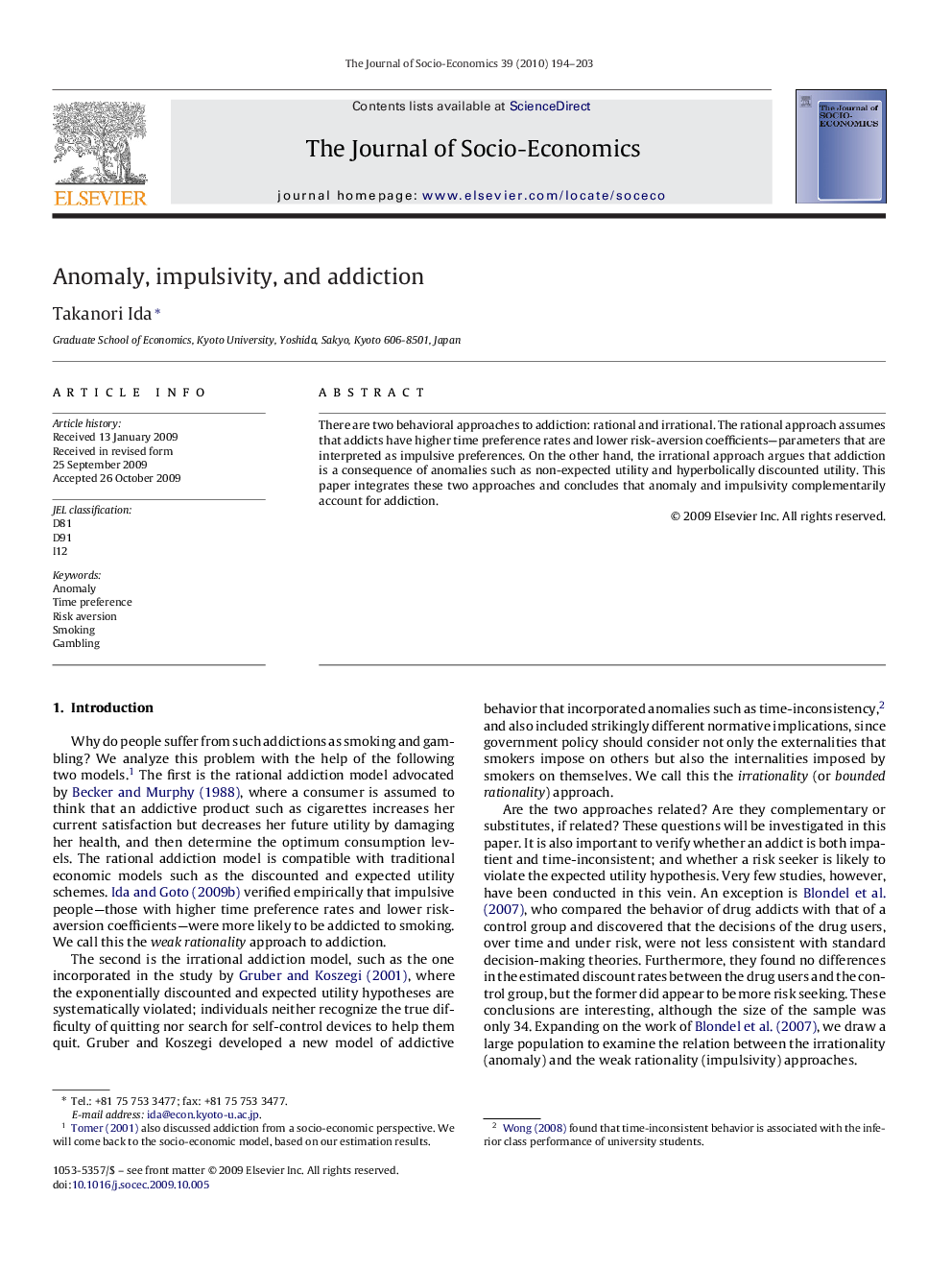| Article ID | Journal | Published Year | Pages | File Type |
|---|---|---|---|---|
| 970450 | The Journal of Socio-Economics | 2010 | 10 Pages |
Abstract
There are two behavioral approaches to addiction: rational and irrational. The rational approach assumes that addicts have higher time preference rates and lower risk-aversion coefficients—parameters that are interpreted as impulsive preferences. On the other hand, the irrational approach argues that addiction is a consequence of anomalies such as non-expected utility and hyperbolically discounted utility. This paper integrates these two approaches and concludes that anomaly and impulsivity complementarily account for addiction.
Related Topics
Social Sciences and Humanities
Economics, Econometrics and Finance
Economics and Econometrics
Authors
Takanori Ida,
